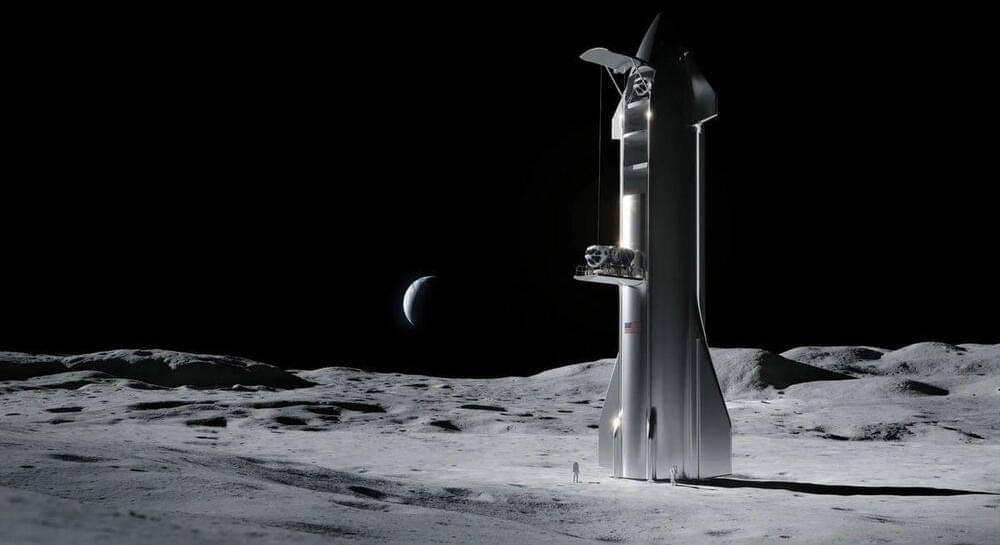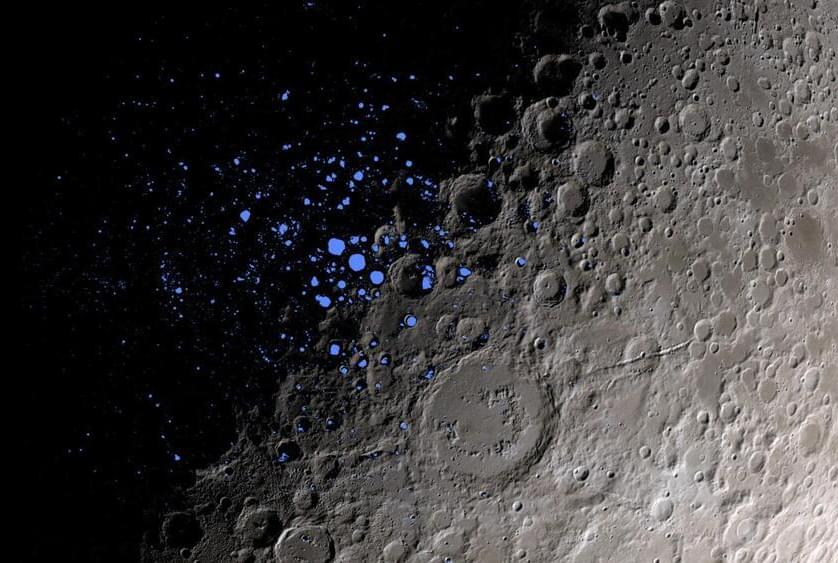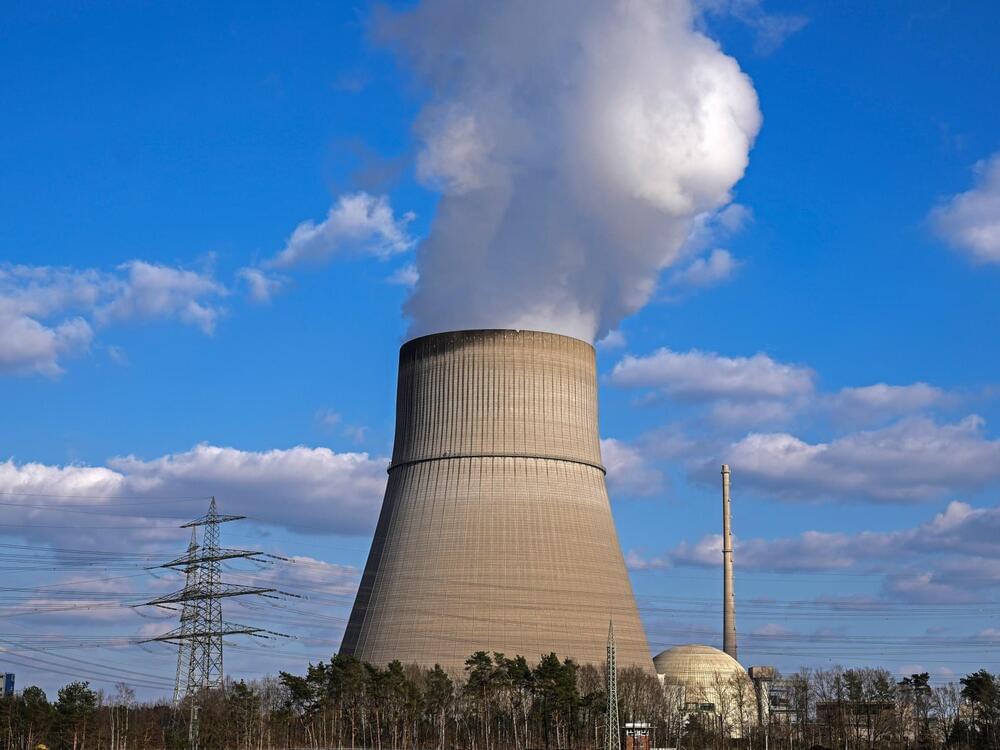Check out Robert’s book “Faster Than Light” ➜ https://www.amazon.com/Faster-than-Light-Your-Shadow/dp/1662…atfound-20 https://www.amazon.com/Faster-than-Light-Your-Shadow/dp/1662…atfound-20
Category: space travel – Page 79


Cold Chemistry is Different
Experiments demonstrate some of the unusual features of molecular reactions that occur in the deep cold of interstellar space.
Many common small molecules are formed in interstellar space, and their low temperatures are expected to have profound effects on their chemical reactions because of quantum-mechanical effects that are masked at higher temperatures. Researchers have now demonstrated some of these cold chemistry phenomena—such as the effects of molecular rotation and collision energy on reaction rates—in a reaction between a hydrogen ion and an ammonia molecule in the lab. The results, while intuitively surprising at first glance, can be explained by a careful theoretical analysis of the quantum chemistry.
Measuring reaction rates at low temperatures is useful for testing quantum-chemical theory because in those conditions molecules may occupy only a few well-defined quantum states. Such experiments could also offer insights into chemical processes in the cold clouds of gas in star-forming regions of interstellar space, where many of the simple molecules that make up solar systems are formed. But low-temperature experiments are difficult, especially for charged atoms and molecules (ions), because they are very sensitive to stray electric fields in the environment, which accelerate and heat up the ions.

Crystalline Quest: The International Pursuit of Lunar Ice Deposits
Chandrayaan-3’s landing on the Moon and subsequent sulfur detection has propelled lunar ice research forward, aiding NASA ’s plans for a sustainable lunar station. These developments highlight the growing collaboration in space exploration.
Building a space station on the Moon might seem like something out of a science fiction movie, but each new lunar mission is bringing that idea closer to reality. Scientists are homing in on potential lunar ice reservoirs in permanently shadowed regions, or PSRs. These are key to setting up any sort of sustainable lunar infrastructure.
In late August 2023, India’s Chandrayaan-3 lander touched down on the lunar surface in the south polar region, which scientists suspect may harbor ice. This landing marked a significant milestone not only for India but for the scientific community at large.

New laser experiment spins light like a merry-go-round
In day-to-day life, light seems intangible. We walk through it and create and extinguish it with the flip of a switch. But, like matter, light actually carries a little punch—it has momentum. Light constantly nudges things and can even be used to push spacecraft. Light can also spin objects if it carries orbital angular momentum (OAM)—the property associated with a rotating object’s tendency to keep spinning.
Scientists have known that light can have OAM since the early 90s, and they’ve discovered that the OAM of light is associated with swirls or vortices in the light’s phase—the position of the peaks or troughs of the electromagnetic waves that make up the light. Initially, research on OAM focused on vortices that exist in the cross-section of a light beam—the phase turning like the propeller of a plane flying along the light’s path.
But in recent years, physicists at UMD, led by UMD Physics Professor Howard Milchberg, have discovered that light can carry its OAM in a vortex turned to the side—the phase spins like a wheel on a car, rolling along with the light. The researchers called these light structures spatio-temporal optical vortices (STOVs) and described the momentum they carry as transverse OAM.
NASA Revives The Retro ‘Worm’ Logo For Next Mission To The Moon
The Artemis II mission is scheduled to put people back into lunar orbit in 2025, while the Artemis III will see humans return to the lunar surface no earlier than 2026, per Space. America’s manned mission to the moon is the marquee news, but the real news here is that the logo we most associate with NASA is called the “worm.” Quick! Put on some Beastie Boys, y’all, because NASA is once again doing the worm.
Artemis II Boosters Receive Iconic NASA “Worm”


Is nuclear power the key to space exploration?
The Voyager 1 was launched in 1977. Almost 50 years later, it’s still going and sending back information, penetrating ever deeper into space. It can do that because it’s powered by nuclear energy.
Long a controversial energy source, nuclear has been experiencing renewed interest on Earth to power our fight against climate change. But behind the scenes, nuclear has also been facing a renaissance in space.
In July, the US National Aeronautics and Space Administration (NASA) and Defense Advanced Research Projects Agency (DARPA) jointly announced that they plan to launch a nuclear-propelled spacecraft by 2025 or 2026. The European Space Agency (ESA) in turn is funding a range of studies on the use of nuclear engines for space exploration. And last year, NASA awarded a contract to Westinghouse to develop a concept for a nuclear reactor to power a future moon base.

Hong Kong’s First Hydrogen Bus Hits The Streets Marking A Historic Step In #MissionZero
Hong Kong’s public transportation landscape undergoes a revolutionary transformation with the deployment to service of a cutting-edge zero-emission hydrogen bus today. The first-ever hydrogen double deck bus has commenced service on our Route 20, marking a remarkable achievement and the next step in the transition of Hong Kong’s rich transport history as it takes to the road with customers on board, following our previous debut of Hong Kong’s first ever electric double deck bus two years ago. We eagerly anticipate reaching even more significant milestones in the near future, as the hydrogen bus will expand its operations to two additional routes in the next phase, underscoring our leading position in the public transport zero-emission space and making a further transformation for citizens and travellers in the vibrant heart of Kowloon.
Our hydrogen double deck bus, which is operated from and refuelled at Hong Kong’s first hydrogen refuelling station in our West Kowloon Depot, embarks on its first journey at 11:00am today. We were proud to welcome many joyful bus and transport enthusiasts on board the bus and share in the joy by handing out some certificates and gifts to commemorate this historic moment – “The Future is H2re”. Serving Route 20, the hydrogen bus will travel from Kai Tak (Muk On Street) to Cheung Sha Wan (Hoi Tat), offering in the initial phase a daily schedule of 6 to 8 trips.
Roger Ma, General Manager (Operations) of Citybus expressed his pride in the groundbreaking achievement of our “#MissionZero” campaign. “We take great pride as a company in serving the citizens of Hong Kong every day and in debuting Hong Kong’s first ever hydrogen double deck bus, which will shuttle through the bustling heart of Kowloon, encompassing the districts of Sham Shui Po, Yau Tsim Mong, and Kowloon City. In the next phase, our hydrogen bus will expand its service coverage to include Routes 20A and 22M.These three routes, include two prominent trunk routes, serve as core routes for Citybus, enabling us to gather further invaluable operational insights into real-world scenarios, including differing traffic conditions, weather factors and performance.”

Meet the SpaceX Crew-8 astronauts launching to the ISS on March 2
Four new astronauts are scheduled to launch to the International Space Station on Saturday (March 2) as part of NASA’s SpaceX Crew-8 mission.
Crew-8, the eighth operational commercial crew mission for NASA, will lift off Saturday at 11:16 p.m. EST (0416 GMT on March 3) from Kennedy Space Center in Florida using the SpaceX Crew Dragon Endeavour spacecraft, situated atop a Falcon 9 rocket. The Crew Dragon spacecraft will then dock with the orbiting lab the following day around 2:10 p.m. EST (1910 GMT).